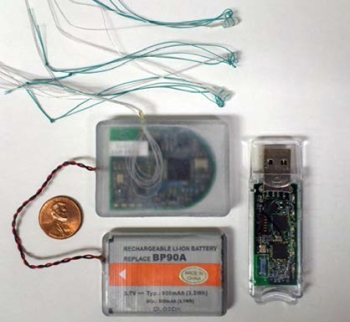


Posted August 4, 2015
Changfeng Tai, Ph.D., University of Pittsburgh
 Spinal cord injury (SCI) is associated with devastating life-changing consequences. One of the major challenges facing individuals with SCI is loss of bladder function. Individuals with SCI often have difficulty with urine leakage (incontinence) and with voiding (emptying) their bladder (micturition), yet there are currently no treatments that target both of these bladder functions. Currently, available treatments are suboptimal and have severe drawbacks. A sacral anterior root stimulator can be implanted to restore bladder function, but this procedure requires the irreversible cutting of the sensory spinal roots, an undesirable option as it sacrifices residual sexual and bowel functions. Daily catheterization provides some capacity for independence, but regular use can result in frequent infections.
Spinal cord injury (SCI) is associated with devastating life-changing consequences. One of the major challenges facing individuals with SCI is loss of bladder function. Individuals with SCI often have difficulty with urine leakage (incontinence) and with voiding (emptying) their bladder (micturition), yet there are currently no treatments that target both of these bladder functions. Currently, available treatments are suboptimal and have severe drawbacks. A sacral anterior root stimulator can be implanted to restore bladder function, but this procedure requires the irreversible cutting of the sensory spinal roots, an undesirable option as it sacrifices residual sexual and bowel functions. Daily catheterization provides some capacity for independence, but regular use can result in frequent infections.
The pudendal nerve normally controls bladder function, but SCI can cause this nerve to lose its connection to the brain. A wireless stimulator is capable of bridging the gap created by the injury and restoring nerve function. Supported by a fiscal year 2010 Investigator-Initiated Research Award from the Spinal Cord Injury Research Program (SCIRP), Dr. Changfeng Tai of the University of Pittsburgh developed a novel neuroprosthetic device to restore urinary bladder function after SCI without damaging residual nerve function. Dr. Tai and his colleagues previously found that stimulating the pudendal nerve at different frequencies could either inhibit bladder activity (1-10 Hz) or induce bladder contraction to void the bladder (20-40 Hz). Under his SCIRP award, Dr. Tai developed a small, implantable, wireless stimulator for control of both continence and micturition after SCI.
The device consists of several components, including a stimulator and battery pack to be implanted under the skin on the left side of the lower back, two electrode cuffs to extend from the stimulator to the pudendal nerve, and a USB controller for programming the stimulator (Figure 1). Several cycles of testing and re-design of the device resulted in a stimulator with (1) reliable wireless communication between a USB controller and the implant (within 2 meters); (2) wireless charging capability using an external charging coil (full charge within 20 minutes); and (3) effective biphasic stimulation of the pudendal nerve. Testing in both anesthetized and awake animals with chronic SCI confirmed that low-frequency (5 Hz) stimulation inhibits urine flow (even with the bladder at 90% of capacity), while high-frequency (20-50 Hz) stimulation induces a strong sustained contraction for effective voiding of the bladder. Testing continued for up to four weeks after implantation of the device, demonstrating consistent effectiveness throughout the animals' typical daily routine. The battery was calculated to have a two- to three-day life span on a full charge, but was charged daily for maximum efficiency of the stimulator.
Dr. Tai has been selected for follow-on funding through the Joint Warfighter Medical Research Program to continue the development of this implantable neuroprosthetic device for normalizing bladder function. He plans to modify and optimize the device for human use and conduct the necessary preclinical work for submission of an Investigational Device Exemption to the Food and Drug Administration for testing in human clinical trials. The successful development of this device could greatly improve the quality of life for individuals with SCI who currently experience bladder dysfunction and enable them to live with a higher degree of independence.

Figure 1. The implantable stimulator device consists of several components: the stimulator itself (middle), which is attached to both the battery pack (bottom) and electrode cuffs (top); and the wireless USB controller (right).
Links:














